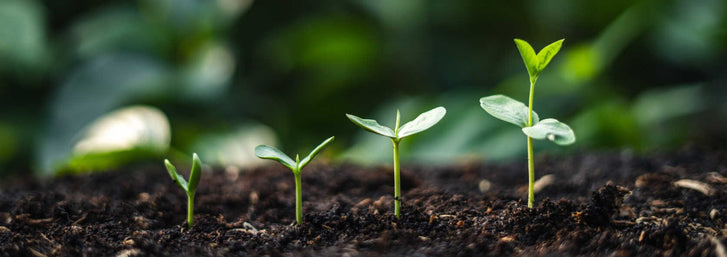
Erica Groneman

What is Miso?
Miso is a Japanese seasoning used in a variety of different foods. Usually you will see miso as a paste. It has also come to be known as a Japanese superfood recognized for its high nutrient value and health benefits. It is said to improves digestion and gut health, may decrease the risk of stomach cancer, and strengthens the immune system. Miso is usually used in small amounts, which is probably good because of its high sodium content. One tablespoon of miso provides a third of your recommended daily sodium intake. Those with soy or gluten sensitivities may need to be careful and watchful of the miso ingredients as it is soybean based.
Miso is made by fermenting soybeans with salt and koji. It is relatively straightforward to make from home, but takes some patience (6 months to a year) waiting for it to be ready for use. The longer miso ferments, the darker color it will get. Miso can be adapted by using different ingredients or varying fermenting times for a twist on the flavor. These will affect the final taste of the miso which is why there are so many different misos in Japan. The most common types sold in the United Staes are kome-miso (soybeans and rice koji), mame-miso (soybeans only), and mugi-miso (soybeans and barley).
What Does Miso Taste Like?
The taste of miso is best summarized as umami. When added to a dish it brings out a deeply savory, salty-sweet flavor with the added nutrients from the fermentation process. If your miso tastes more sweet than salty, it has likely only fermented for a short period of time. The base ingredients also influence the strength of flavor. White and yellow miso are the mildest with red delivering the strongest flavors.
What Can You Make With Miso?
Traditionally, the most popular dish to use this paste is a breakfast Miso Soup. If breakfast soups aren’t really your thing you can always add it to glazes, stir-fries, sauces, marinades, and dressings. To add this yummy flavoring to your foods, mix a small amount of the paste with the base of your soups, stews, or other sauces. For dishes that cook for a long time wait to add your paste until you are nearly done. Cooking or boiling this mix for too long will kill the active bacteria that act as probiotics. These beneficial bacteria grow as a result of the fermentation process.
How Do You Make Miso Paste?
The first step to making miso is deciding what ingredients you will use. You can use Soybeans, Lima Beans, chickpeas, Farro, Lentils, and more as your base ingredients. Cook your base and mix it with your koji and salt. Create a ball to sit in your fermentation pot. Coat the outside of the ball with salt as a natural preservative. Then you will ferment your mix for 3 months to a year. The longer you ferment the stronger the flavor becomes. Short periods tend to create milder, sweet flavors while long periods of fermentation usually result in saltier flavors.
About the Author

Hi, I’m Erica Groneman. I am a mom, volunteer, and a gardener. There’s something satisfying about getting my hands dirty and watching things grow. I believe gardening is universal and crosses all boundaries, bringing us all together. I hope we can share in the joy of growing together. Thanks for stopping by!
Become a True Leaf Market Brand Ambassador! You’ll enjoy awesome perks, free products and exclusive swag & offers! Help us create a gardening revolution and help others experience the joy of growing!
Leave a comment
Your email address will not be published. Required fields are marked *
9 comments
Cassidy
I had no idea miso soup was eaten as breakfast! I will definitely be starting my days with some now.
Lynn Bonelli
I love miso so much that I named one of my cats Miso! I recently acquired a book called Koji and have been fascinated by it all. I think I might try my hand at making my own miso and see how it goes!
Kat
We love Miso paste! We make a delicious plant based cheese sauce and incorporate miso. Great post
HawkridgeFarms
Thanks for all the great info I cant wait to try making some myself!
shayla
Thank you for this awesome information! I’m going to try it out!
Jodi Lemaster
This is great information on miso! It is a staple item at my house! Such a great ingredient to have on hand!
Michele James
I used to use this, but stopped and now I’m interested in trying it again. I probably will buy some at the store and may never make my own. The nutrients said to be good for digestion are why I’m interested. Also, I remember it tasted good as I love salt flavor.
Heather Jennings
Fermentation is one of the coolest things… I’ll have to add this to my to do list
David
I like miso but what is koji?
Further Reading

Reviewing the Aquatree Garden: A True Leaf Market Experience
The AquaTree Garden is an innovative growing experience! This nifty appliance allows you to grow leafy greens, microgreens, herbs, large sprouts, and vegetable starts (like tomatoes) all at once! When it comes to indoor gardening, there is no question ...

Ashleigh Smith
2024-04-225 min read1
Parasitoid Wasps: A Beneficial Insect in the Garden
Written By Lara Wadsworth There are estimated to be around one million different species of parasitic wasps worldwide. In fact, most wasps are parasitic, which means they live on or in a host at the host's expense. For common garden pests like aphids, ...

Ashleigh Smith
2024-04-226 min read0
Succession Planting: The Key to a Continual Harvest
Do you find yourself harvesting large amounts of any given vegetable from your garden all at once? There is a solution! The practice of succession planting, or planting in segments over a period of time, allows you to harvest root vegetables, leafy gre...

Ashleigh Smith
2024-04-223 min read2
10 Natives of the Southwest USA for Pest Control
Written By Lara Wadsworth The Southwestern United States is a region incredibly unique to the rest of the country. The hot, dry weather can be challenging for plants and animals to thrive without additional help. That is why gardening with natives can ...

Ashleigh Smith
2024-04-157 min read0



